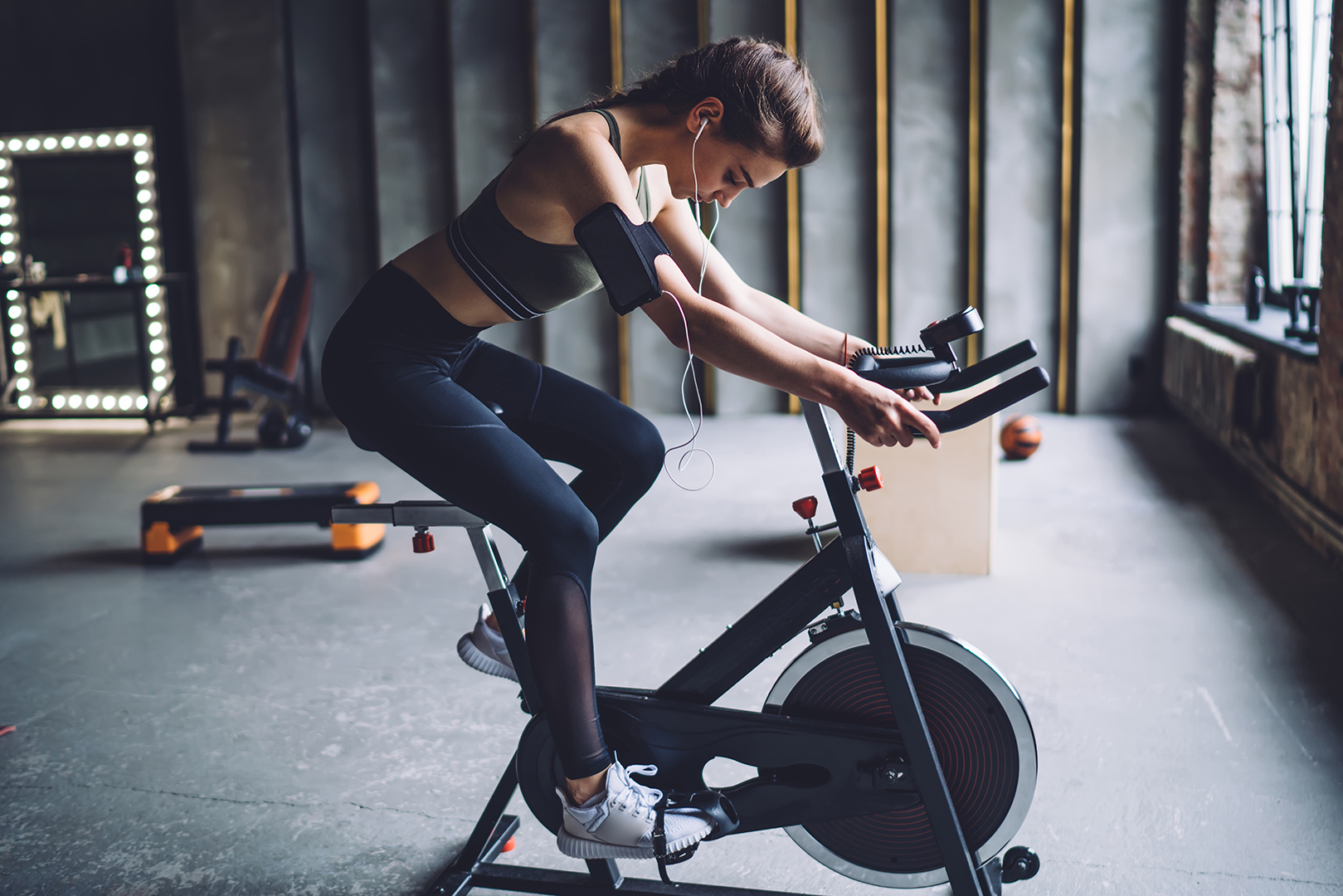By Brandy Abalos
Spin cycling is a great form of exercise. It allows you to select from many types of workouts, from intense cardio to low-impact rides. The more you get on your spin bike, the more you will crave the feeling of healthy exertion. Soon, you will likely find yourself setting goals and striving to beat your personal bests.
While the challenges presented by a spin bike can be great for your health, it is impossible to ignore one complaint by frequent cyclers—back pain. Here are some tips to avoid back pain while riding your spin bike.
Adjust Your Bike to a Proper Fit
Most spin cycling injuries are the result of a poor fitting bike. Spin bikes can typically be adjusted at several junctions. You should ensure the handlebar and seat heights are appropriate. You can also adjust the distance between your seat and the handlebars. Avoid hunching and instead, keep an upright position with outstretched arms.
Stretch Before You Begin
Before you begin every workout, you should thoroughly stretch your muscles. Stretching is essential to warm up muscles and other body parts. If you fail to stretch, you can end up with extensive injuries that prevent you from riding. Essential stretches before you hop on your bike include:
- Neck
- Chest
- Side and lower back
- Quads
- Hamstrings
- Hips
- Lunges
- Shoulders
By fully stretching your body, you can avoid serious injuries that can significantly impact your ability to continue routine workouts.
Choose Low-Impact Rides
Low-impact spin workouts are easier on your joints. Especially if you are a beginner, you should focus on spins that are smoother and rated for all rider levels. A flatter scenic ride is often a better choice than touch hills or mountain climbs.
Minimize The Length of Your Ride
If you are trying to recover from soreness or have engaged in tough rides recently, you should consider minimizing the length of your ride. You don’t have to struggle with a full-length 60-minute class every time. If you want to do 60 minutes of cycling, consider taking shorter 15, 20 or 30-minute classes in combination with breaks in between. Allow yourself time to adjust your seat and grab some water.
Posture During the Ride
Some people prefer to stay seated while cycling, and others get up and out of the saddle. You should do what feels best to you but be aware of your posture. Standing up during a ride allows you to adjust your position and realign your body. However, longer times off the seat can cause overexertion and back strain. Try to maintain a straight back and extended arms throughout the ride.
Pay Attention to Resistance
You may want to keep up with others in the class or with the instructor. However, you should maintain a resistance that feels right to you. When you stand, you may be inclined to increase your resistance. This can make you feel like you’re struggling, and you may resort to decreasing your resistance. However, too little resistance can lead to back injury as well. The pedals won’t support your weight, and you may lean too far forwards. This hunching can lead to back strain.
Listen to Your Body
All of the spin rides offered by companies like Peloton and similar brands have been tested and are likely safe. However, you should listen to what your body says during and after a workout. While intense exercise can lead to some sore muscles, it shouldn’t result in aches and pains that last for days. That indicates something is wrong. If you have back pain or other issues that last for a few days after resting, you should consult with a doctor.
Practice Good Habits to Avoid Back Pain
The goal with spin cycling is to get good exercise and motivate yourself to become healthier. Don’t push yourself so hard that you actually become injured. Practice good exercise habits to avoid long-term injury that could impact your ability to continue spin cycling.








Leave A Comment